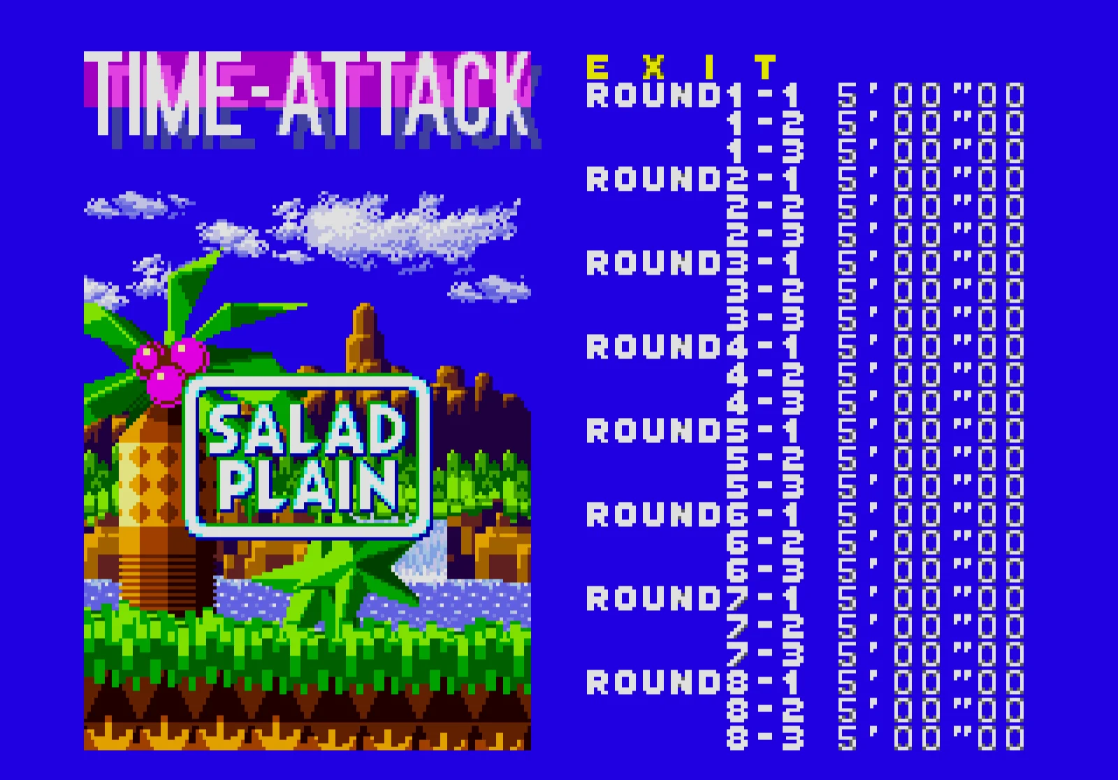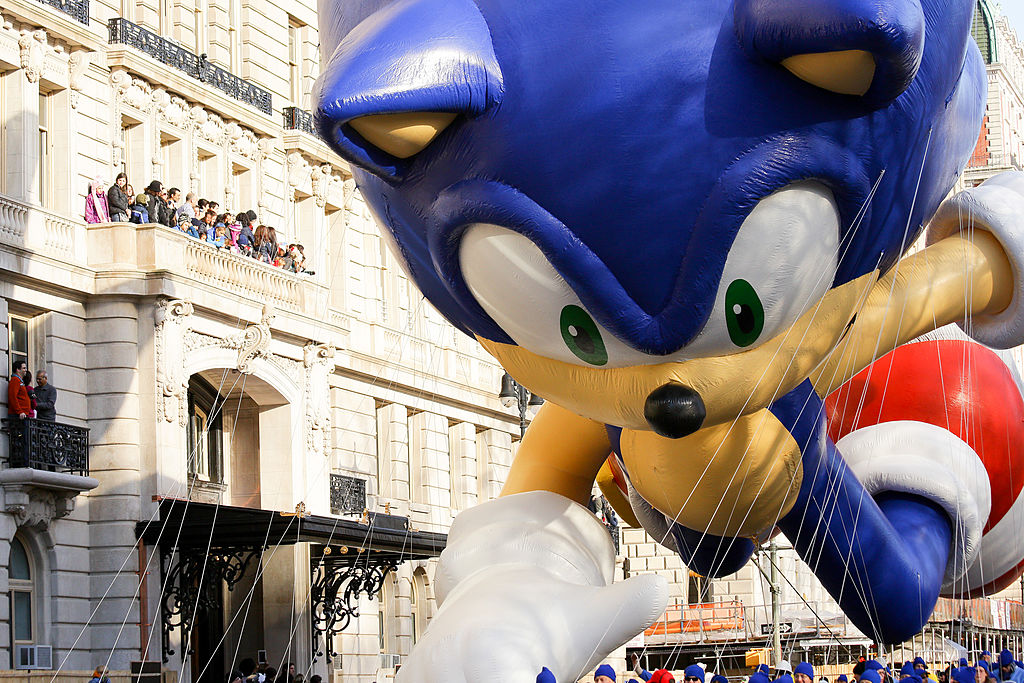Tag: sonic
7 Sonic the Hedgehog Prototypes
Article via Kotaku
Few things make me happier than hearing that a generous soul, upon discovering a prototype or unreleased game, has decided to take it upon themselves to get that game off of its ROM cartridge and make it available to the world.
It’s one thing to read anecdotes from the developers and look at early concept art for lost and early versions of games, but it’s another thing altogether to get to play these lost artifacts. You get to experience for yourself how a game evolved over the course of its development, giving you a deeper understanding of how the finished product became what it is.
The most treasured prototypes are, as you might expect, games from series with fame and/or notoriety: Pokémon, Resident Evil, and The Legend of Zelda are all high-profile series that have had early, sometimes wildly different, prototypes found and preserved for all to study and enjoy. But few well-loved series have had their development history as well-chronicled through prototypes as Sega’s Sonic the Hedgehog. Many Sonic games for the Genesis console family have prototypes that ended up becoming publicly available, all of which give us candid looks at the games in the middle of their development.
One wonders if Sega in the 1990s was just an exceptionally leaky company, because there are quite a few classic Sonic prototypes floating about. Many of them are simply incremental builds of the same game, each one featuring a little tweak to a stage design, maybe a handful of edits to the sprites. But several of the early builds that have been found are far more interesting: featuring cut stages, discarded gameplay elements, placeholder graphics, and wildly different soundtracks. Taken together, they paint a vivid picture of how these games were made: what the developers prioritized, what didn’t work, what needed to get the axe, what could have been.
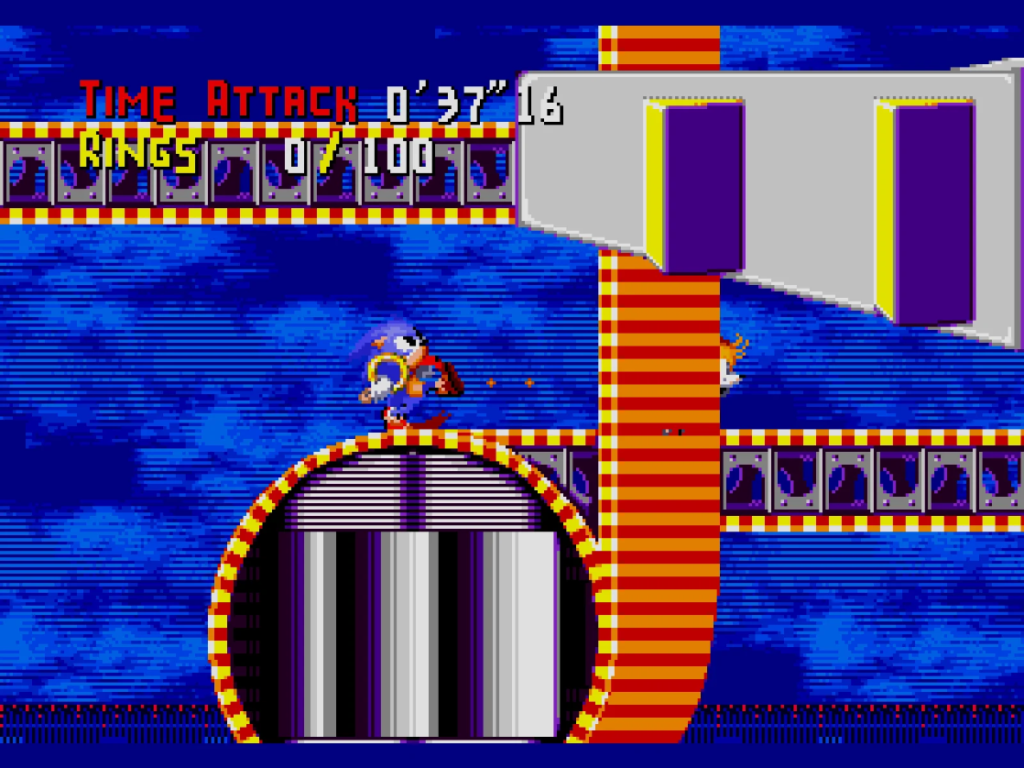
Sonic Crackers
This prototype was circulating online back before there were fully-functional Sega Genesis emulators to play it on. Dating all the way back to as early as 1995, Sonic Crackers is a proof of concept for gameplay mechanics that, alongside several visual and audio elements, eventually found themselves worked into the 1995 Sega 32X game Knuckles Chaotix. You control Sonic and Tails, who run through levels while connected together by rubber-band-like “ring energy” that creates some unique (and uniquely obnoxious) physics. (The name likely comes from “clackers,” a type of toy that consists of two wooden balls at either end of a string, just like how Sonic and Tails are connected in the game.)
Alas, Sonic Crackers is barely a game. There isn’t even a single enemy, just some test levels to zip through. Since Genesis emulation was still in its infancy when the ROM first made its way online, the only way you could play it was if you owned one of those unauthorized add-ons for your Genesis that let you play games off of floppy disks. Since few people did, Crackers went mostly unnoticed for a long time.
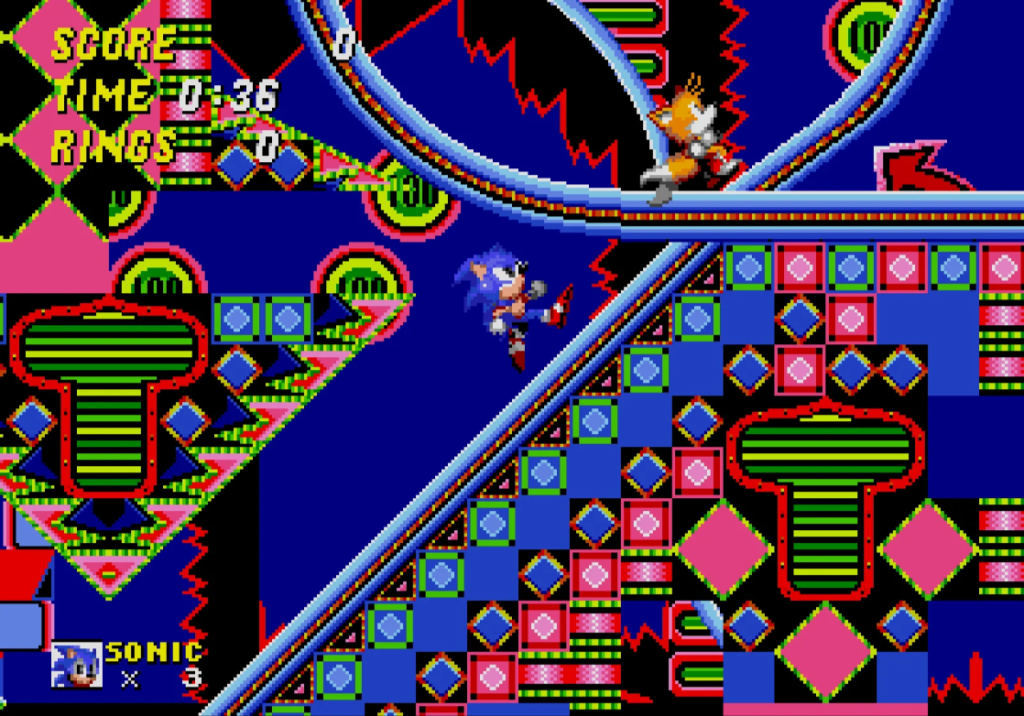
Sonic 2 “Simon Wai” Prototype
Of all of the early Sonic builds that have been preserved, the “Simon Wai” prototype is the most famous. This very early version of Sonic the Hedgehog 2 was chronicled on a late 90s website called Secrets of Sonic the Hedgehog, but all the site had was a set of blurry thumbnail screenshots until 1999, when the ROM was found on a Chinese-language website and shared with the Western Sonic fan community by a fan named Simon Wai.
I’ve written a fair bit about this particular piece of history elsewhere—I actually showed the ROM to its original programmer, Yuji Naka, back in 2005. The main things about this particular prototype that got fans excited were the inclusion of the Hidden Palace Zone, which had been shown in magazine previews but didn’t make it into the final game, and scraps of two other previously-unknown zones: Wood Zone and Genocide City. There’s barely anything in these zones (and Genocide City, true to its name, kills you almost immediately by dropping you into an empty pit), but it was still a fascinating look at what could have been.
For longtime Sonic fans, the release of the Simon Wai prototype was a huge deal. It left us wondering what other classic Sonic stuff existed that we’d never seen before. Communities like S2Beta, now called Sonic Retro, formed to research the games down to the tiniest detail, finding data buried deep in the ROMs and unearthing more ideas that never came to be.
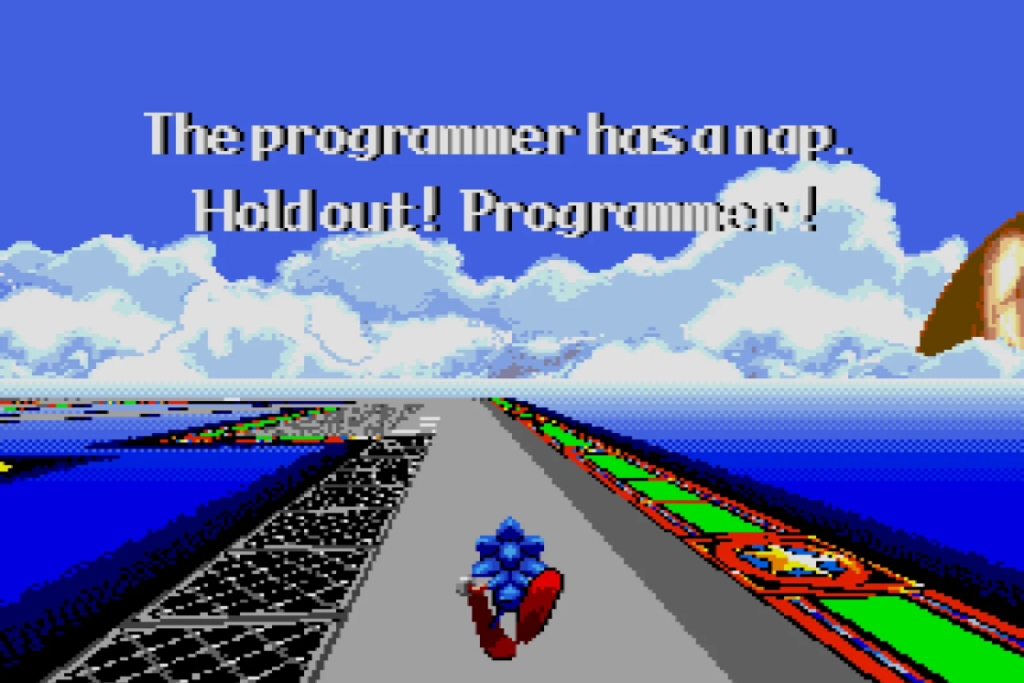
Sonic CD 0510
Sonic CD 0510, named after the May 10, 1993 build date on the CD-R on which it was found, was discovered and distributed online in 2000, not long after the Simon Wai find. The origins of this one are something of a mystery. The initial distribution was handled by a group of fans called Sega Extreme, but the disc itself has vanished into someone’s private collection, hampering efforts to figure out where it came from.
0510 is a snapshot of the Sega CD game Sonic CD smack dab in the middle of its development. Only about half of the stages are fleshed out, and several elements from the final game are either missing or notably different: altered title screen and power-up music, changes to color palettes and enemy designs, and only a simple demo to show off the special stage (above), which includes some meme-worthy text.
The game ends at Zone 3 (Tidal Tempest), but with the use of a debugging menu still present in the ROM, players can visit the rest of Sonic CD’s levels. You might be a bit disappointed if you do venture into the later levels, though. Most of them are extremely bare-bones, featuring skeletal platform placement and almost no objects or enemies to interact with. Zone 2, a planned stage known to have been canned early in Sonic CD’s development (and a subject of intense fan curiosity), is missing at this point, indicating that it was scrapped before this build. There was clearly a ways left to go before Sonic CD was ready for prime time, and it’s fascinating to see just how much got done in the few months before it was released in September of that same year.
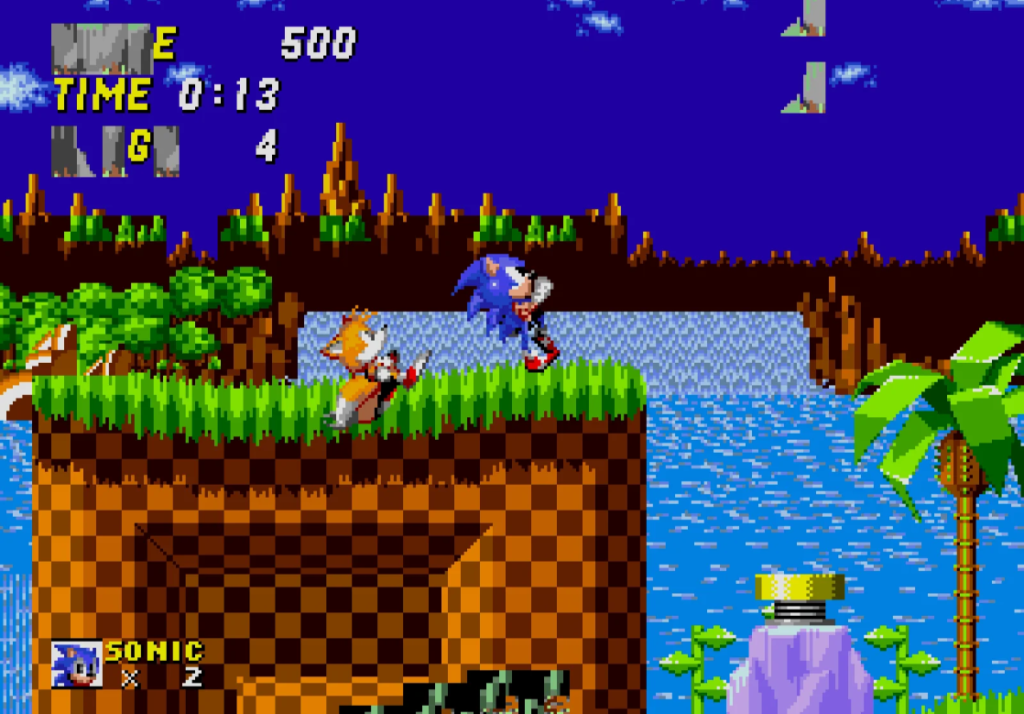
Sonic 2 “Nick Arcade”
If you’re my age, you undoubtedly remember the Nickelodeon game show Nick Arcade. It was a kid’s dreams — a game show centered around video games, where the grand prize was getting transported inside the “Video Zone” (which was, in actuality, a green-screen obstacle course visually enhanced through an Amiga). If you were a preteen and loved games in the early 90s, Nick Arcade was appointment viewing. It was a good place for companies to show off their latest games in motion in the pre-Internet era. Publishers like Konami, SNK, Renovation, and Working Designs used the program as advertising.
When the show proved to be a hit, more companies were keen to jump onboard and give Nickelodeon their games to showcase. Seeing an opportunity to promote their hottest new upcoming title in 1992, Sega gave Nick Arcade a very, very early build of Sonic 2. It was only shown a few times, one of which was during a special show where Melissa Joan Hart and fellow Clarissa Explains it All co-actor Jason Zimbler were competing. It’s very brief, but you can spot (and hear) the differences immediately.
It didn’t go well. Shame nobody knew about the spin dash at the time. Anyhow, you don’t have to have played Sonic 2 all that much to see some big differences between this and the final game. The Nick Arcade build re-used music from Sonic 1, had rough, early animations, a snail-like enemy not seen at all in the final game, and most notably, no Tails!
The Nick Arcade build of Sonic 2 was found in 2006 by a fan named drx, who raised upwards of $1,500 from a community funding effort to obtain it. And boy howdy, is it in a rough state. Besides the issues that could be spotted just from watching the TV show, many of the levels that do exist lack things like enemies and proper object interactions, much like in Sonic CD 0510. Also, Sonic has a vulnerable recoil animation when he hits walls after running at a high speed, which was a terrible idea that the team wisely discarded almost immediately.
That’s not to say Sonic 2 Nick Arcade isn’t extremely interesting, though. Playing this version allows you to see how its developer, Sega Technical Institute, was building on the framework of the original Sonic and trying to make it bigger, faster, and fresher. One particularly fascinating bit is that Sonic 1’s iconic Green Hill Zone is still present and unaltered, presumably as a testing ground. Playing through Green Hill with Sonic 2’s revamped physics, even in this early state, shows just how many under-the-hood changes the game’s engine went through. Just the simple act of running around on the ground feels wildly different.
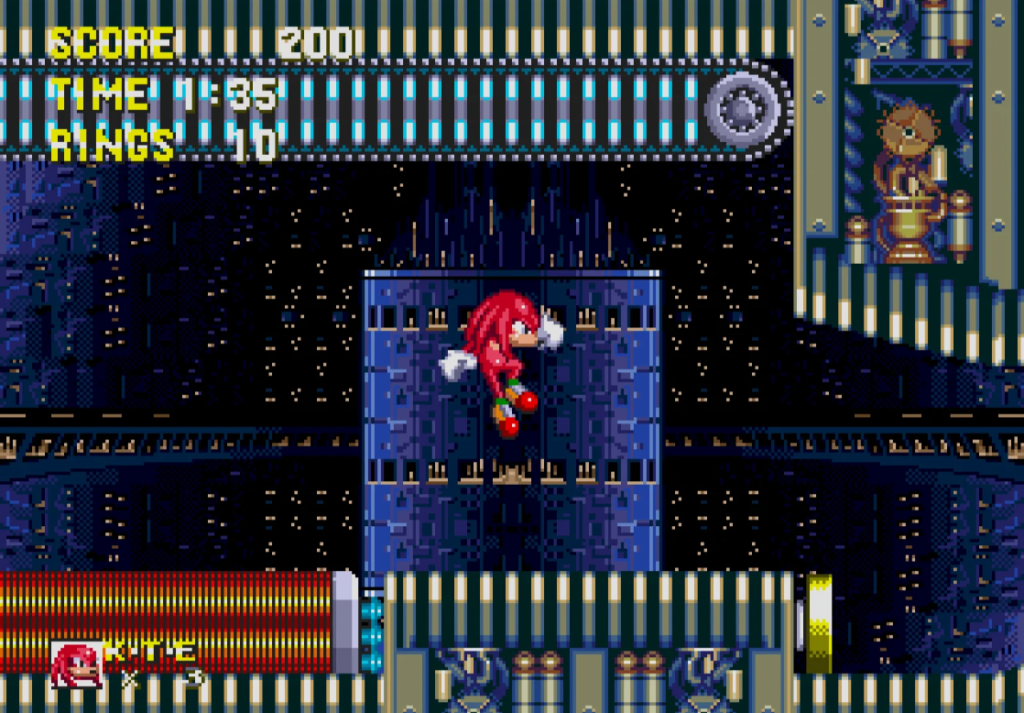
Sonic 3C
The next two games in the Sonic series, Sonic 3 and Sonic & Knuckles, were originally conceived as a single massive game. Under pressure from corporate to release Sonic 3 in February 1994 in the United States, Sega chopped it up into halves. The back half of the game was released later as the “lock-on” cartridge Sonic & Knuckles, into which you could insert your Sonic 3 to get the “full” game. At one point, Sega pondered doing a “special edition” of Sonic 3 in which everything was contained on a single cartridge, but this was scrapped.
There are a few prototype dumps from this period when Sega was mulling over such a release. The most interesting of them is Sonic 3C 0408, which has a lot of the later levels still in a very early state of completion. These ROMs were derived from a series of CD-Rs packed with content downloaded from Sega’s internal QA archives from the mid-90s, and were released alongside early builds of other beloved Genesis games like Dynamite Headdy, Phantasy Star IV, and Ristar.

Sonic CD 0.02
Found as part of an estate sale last year, this is a very, very early build of Sonic CD. This was showcased at a Japanese Sega event called Yuusei Sega World in late 1992, nearly a year before Sonic CD’s release.
When I say that this game is early, I mean extremely early. The only thing on here is a rough and buggy incarnation of Sonic CD’s first stage, Palmtree Panic. You can still time warp to different level variants, but the demo ends after the first boss fight. If you decide to visit the Past, you’ll find that the music is CD-quality Red Book audio, not the chip tunes used in this section in the final game.
Although only one stage is available to play normally, the stage select code from the 0510 build still works… but nothing outside of zone 1 can be chosen. Zone 2 is actually on the list, though, indicating that this comes from a time before that zone got killed off.
Also, the decision to name levels alliteratively seems to have come later, because in Time Attack we see Palmtree Panic named as “SALAD PLAIN.”
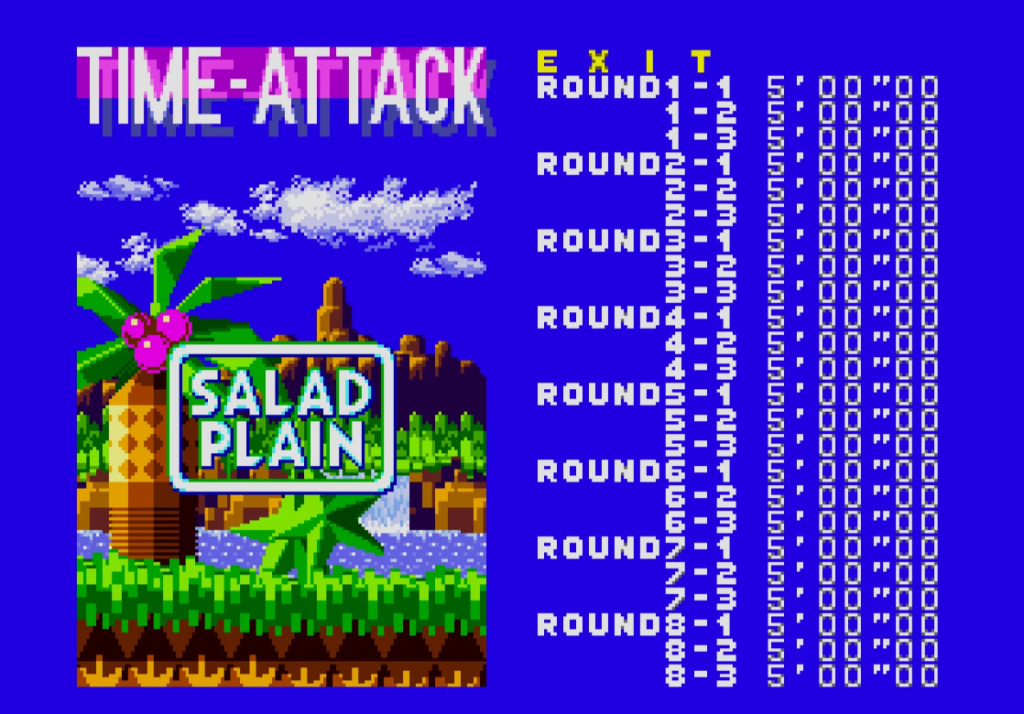
Alongside this build came a few other Sonic CD revisions, including a June 21, 1993 revision with extremely awkward special stages in which you have to hold B to make Sonic run, chasing down weird, bubble-looking UFOs that move in patterns that make no sense whatsoever. Even if you’re not a fan of Sonic CD’s special stages, after playing this, you’ll agree that the final product was a lot better than the original concepts.

Sonic 3 1993-11-03
The most recent Sonic ROM discovery might be the most interesting yet. It’s a build of Sonic the Hedgehog 3 from early November 1993, four months before its official North American release. Since Sonic 3 released in early February 1994, that means there were only months, maybe weeks, between this build and the game going into final production.
After seeing how different this build is from the full release, I have no doubt that the Sonic 3 team worked absurdly hard to make that release date, because in November 1993, this game was rough.
The awkward-looking, washed-out pre-rendered Sonic on the title screen should hint at what to expect here: placeholder sprites for Sonic that look nothing like the final versions, objects that frequently don’t work as intended, points where you can’t progress unless you use debug mode, and completely nonexistent special stages (though you do get a nifty tech demo). But the big thing here is the music: Casino Night, Ice Cap, and Launch Base Zone all have completely different music. (It’s long been speculated that Michael Jackson provided some of the music for Sonic 3; his purported contributions are nowhere to be found in this build. The music in this version matches MIDIs used in the Windows 95 release of Sonic & Knuckles Collection.)
You can see evidence of the developers weighing what to focus on to meet the harsh deadline: Flying Battery Zone, which eventually was shifted to Sonic & Knuckles, is still present in skeletal form here. Tech-savvy fans have also reassembled an early design of Sonic & Knuckles’ Lava Reef Zone from leftover data from the prototype cartridge, indicating that it was in earlier builds but was among the first zones to be cut.
Also, in this version, Sonic has a drop dash. Yes, the drop dash existed almost 25 years before it made its official debut in Sonic Mania.
As amazing as all of these finds have been, there’s a chance there’s still even more early Sonic material yet to be discovered. Classic Sonic fandom is still eager for information about Sonic CD’s lost Zone 2, for example. And there’s been very little in the way of early builds of the very first Sonic the Hedgehog.
Those fires are still being fueled: In April, Sonic CD designer Masato Nishimura tweeted about finding a lost binder full of development materials. A little over a month ago, eagle-eyed researchers scouring YouTube found a rip of a 1991 promotional Japanese VHS tape showing a version of Sonic 1 with some stark differences. Despite how much classic Sonic history has already been preserved, it seems like there’s still more yet to be dug up and analyzed.


